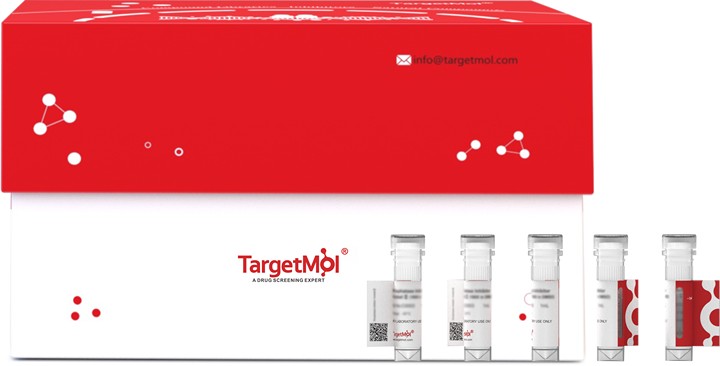Shopping Cart
Remove All Your shopping cart is currently empty
Your shopping cart is currently empty
TIM-3/KIM-3/HAVCR2 Protein, Human, Recombinant (hFc) is expressed in HEK293 Cells. The accession number is Q8TDQ0.

| Pack Size | Price | USA Warehouse | Global Warehouse | Quantity |
|---|---|---|---|---|
| 5 μg | $115 | 7-10 days | 7-10 days | |
| 10 μg | $189 | 7-10 days | 7-10 days | |
| 20 μg | $313 | 7-10 days | 7-10 days | |
| 50 μg | $622 | 7-10 days | 7-10 days | |
| 100 μg | $919 | 7-10 days | 7-10 days | |
| 200 μg | $1,360 | 7-10 days | 7-10 days | |
| 500 μg | $2,280 | 7-10 days | 7-10 days | |
| 1 mg | $3,390 | 7-10 days | 7-10 days |
| Biological Activity | Assay #1: Immobilized TIM-3, hFc, Human at 0.5 μg/ml, the concentration of Anti-TIM3 mouse antibody (Genscript) that produces 50% optimal binding response is found to be approximately 5.0 ng/ml. Assay #2: Immobilized Galectin-9, His, Human at 0.5 μg/ml (100 µl/well) can bind TIM-3, hFc, Human with a linear range of 0.78-6.25 μg/ml. |
| Description | TIM-3/KIM-3/HAVCR2 Protein, Human, Recombinant (hFc) is expressed in HEK293 Cells. The accession number is Q8TDQ0. |
| Species | Human |
| Expression System | HEK293 Cells |
| Tag | hFc |
| Accession Number | Q8TDQ0 |
| Synonyms | TIMD-3,TIM-3,T-cell membrane protein 3,T-cell immunoglobulin mucin receptor 3,T-cell immunoglobulin and mucin domain-containing protein 3,Hepatitis A virus cellular receptor 2,HAVcr-2 |
| Construction | Ser22-Arg200 |
| Protein Purity | > 95% as determined by SDS-PAGE |
| Molecular Weight | 60~65 kDa (Reducing conditions) |
| Endotoxin | < 0.2 EU/μg of protein as determined by the LAL method. |
| Formulation | Lyophilized from a 0.2 μm filtered solution in PBS. |
| Reconstitution | Reconstitute the lyophilized protein in sterile deionized water. The product concentration should not be less than 100 μg/ml. Before opening, centrifuge the tube to collect powder at the bottom. After adding the reconstitution buffer, avoid vortexing or pipetting for mixing. |
| Stability & Storage | Upon receiving, this product remains stable for up to 6 months at lower than -70°C. Upon reconstitution, the product should be stable for up to 1 week at 4°C or up to 3 months at -20°C. For long term storage it is recommended that a carrier protein (example 0.1% BSA) be added. Avoid repeated freeze-thaw cycles. |
| Shipping | In general, Lyophilized powders are shipping with blue ice. Solutions are shipping with dry ice. |
| Research Background | T cell Ig- and mucin-domain-containing molecules (TIMs) are a family of transmembrane proteins expressed by various immune cells. TIM-3 is an inhibitory molecule that is induced following T cell activation. TIM-3 is expressed by exhausted T cells in the settings of chronic infection and cancer, and tumor-infiltrating T cells that co-express PD-1 and TIM-3 exhibit the most severe exhausted phenotype. Tumor-infiltrating dendritic cells also express TIM-3. TIM-3 expression on DCs was found to suppress innate immunity by reducing the immunogenicity of nucleic acids released by dying tumor cells. Research studies show that heterodimerization of TIM-3 with CEACAM-1 is critical for the inhibitory function of TIM-3, and co-blockade of TIM-3 and CEACAM-1 enhanced antitumor responses in a mouse model of colorectal cancer. Its binding to Galectin-9 induces a range of immunosuppressive functions which enhance immune tolerance and inhibit anti-tumor immunity. TIM-3 ligation attenuates CD8 + and Th1 cell responses and promotes the activity of Treg and myeloid derived suppressor cells. In addition, dendritic cell-expressed TIM-3 dampens inflammation by enabling the phagocytosis of apoptotic cells and the cross-presentation of apoptotic cell antigens. |
| Size | Quantity | Unit Price | Amount | Operation |
|---|

Copyright © 2015-2025 TargetMol Chemicals Inc. All Rights Reserved.